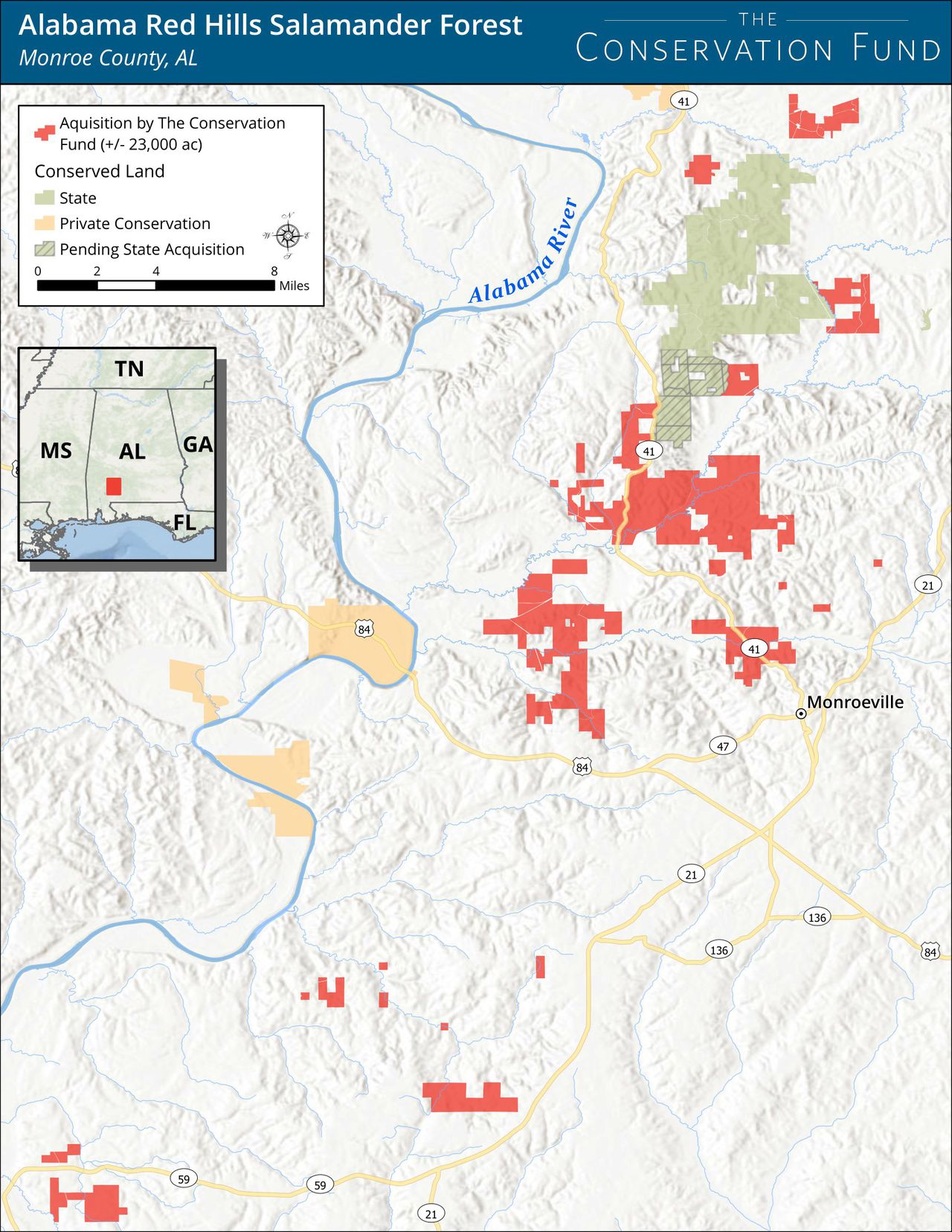Nonprofit buys 23,000 acres to protect rare Alabama salamander
Approximately 23,000 acres of forestland in the Red Hills region of southwest Alabama has been bought up by The Conservation Fund, a leading national nonprofit in land protection.
Why? To protect some slimy critters found exclusively in Alabama.
The Red Hills Salamander is the only terrestrial vertebrate that inhabits only Alabama, according to Outdoor Alabama. They live in parts of just six counties: Crenshaw, Butler, Covington, Conecuh, Monroe and Wilcox. The species is considered threatened by the U.S. Fish and Wildlife Service.
“It’s a pretty unique situation where you have this relatively small area in South Alabama, where you have this species that’s the only place in the world that it occurs,” said Andrew Schock, regional director for The Conservation Fund. “There’s been interest over the decades in this salamander and trying to protect its habitat so that it can be ensured that it’ll probably be viable 100 years from now.”
The salamander spends most of its time underground, according to Outdoor Alabama. For about 12 hours from dusk to dawn, it stays at the mouth of its burrow system.
The nocturnal creatures are relatively large at 6 to 8 inches. While many salamander species have lungs, the Red Hills does not, according to Outdoor Alabama, making it one of the largest lungless salamanders in the world.
A map displaying the location of the forestland bought by The Conservation Fund.
The Conservation Fund intends to open the land for fishing, hunting, bird watching, hiking and other public uses. The group has been working in conjunction with the Alabama Department of Conservation and Natural Resources and the U.S. Fish and Wildlife Service to protect critical habitats in the forest.
The land, now known as the Red Hills Salamander Forest, was previously owned by Conservation Resources, a for-profit investment organization. Schock said that organization had been taking care of the land — without threatening the salamanders — since 2009. But when Conservation Resources decided to sell, The Conservation Fund stepped in to make sure the land was not split among multiple buyers, he said.
“If you sell the property, it’s possible it could get divided up into smaller pieces, and the subsequent landowners might not be as interested in taking care of the salamanders,” he said.
The Conservation Fund got a $17 million loan from the Richard King Mellon Foundation to help pay for the land. The Foundation seeks “to protect, preserve and restore America’s environmental heritage,” according to its website. In addition to protecting the threatened species, The Conservation Fund says there will be other benefits to the environment from the purchase. Its thousands of climate resilient acres store roughly 3.5 million tons of CO2 equivalent, “which is comparable to removing 779,000 gasoline-powered passenger vehicles from the road for one year,” according to a release from the nonprofit.
But of course, first and foremost, is the protection of the Red Hills Salamander.
“As something that is only in Alabama, and only in this part of Alabama, I personally think it’s a point of pride, right?” Schock said. “You have this salamander that only exists in one place in the entire world. So I think it’s important that the state of Alabama has an interest in them, which the state apparently does.”
